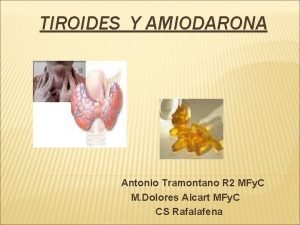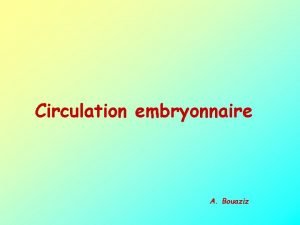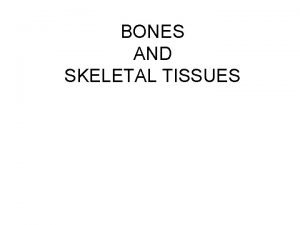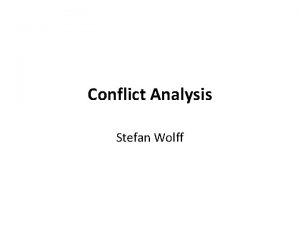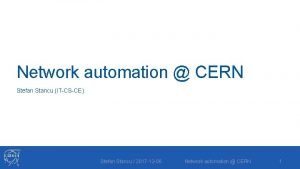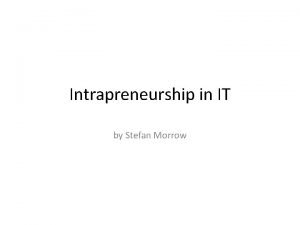Conflict Analysis Stefan Wolff Conflict analysis in three










- Slides: 10

Conflict Analysis Stefan Wolff

Conflict analysis ‘in three easy steps’ 1. Map the situation • Identify relevant actors, structure and issues at local, state, regional, global level • Establish what their interests are and how they relate to each other • Calculate the balance of power between them 2. Identify scenarios • Clarify potential pathways to escalation and de-escalation • Establish indicators • Identify critical junctures 3. Monitor the situation and assess threats • Monitor indicators and map them onto pathways • Establish when critical junctures are reached • Adjust threat assessment regularly

The local level of analysis State Structures and Actors • local elites • representatives of the central government • established institutional arrangements and socioeconomic structures Non-state Structures and Actors • locally resident ethnic/ religious groups and their members and elites • locally operating – NGOs and their members and elites – rebel forces and their members and elites – private sector interest groups and their members and elites – criminal networks and their members and elites

The state level of analysis State Structures and Actors • national elites • central government and its members • established institutional arrangements and socioeconomic structures (including resource allocation/distribution) Non-state Structures and Actors • ethnic/religious groups and their members and elites • nationally operating – NGOs and their members and elites – rebel forces and their members and elites – private sector interest groups and their members and elites – criminal networks and their members and elites

The regional level of analysis State Structures and Actors • neighbouring states and their elites • regional powers and their elites • regional IOs and their members and elites • established structures of political and economic cooperation Non-state Structures and Actors • cross-border/trans-national networks (including their members and elites) – – – ethnic religious civil society business organised crime rebel groups

The global level of analysis State Structures and Actors • powerful states of global reach and their elites • IOs and their members and elites Non-state Structures and Actors • INGOs and their elites • diaspora groups and their members and elites • international organised crime networks and their members and elites • TNCs and their members and elites

Cross-cutting issues ‘Issues’ (examples) Local National Regional Global • • • environmental degradation resource scarcity energy security food security communicable diseases

Scenario-building • Draw on – Past pathways to escalation and comparative cases – Consider key events (holidays, anniversaries, elections) • Indicators – Levels and forms of protest (local vs. national, non-violent vs. violent) – Governmental responses (dialogue, force, criminalisation, acknowledgement, recognition) – External involvement (partial vs. impartial, unilateral vs. multilateral) • Critical junctures – – First death/s Arms shipments from abroad Forces build-up in border areas General mobilisation

Situation monitoring and threat assessment • Diversify sources – – Mass media at all levels Embassy reports Intelligence reports HR reports • Verify sources – – ‘Triangulate’ information Seek independent or second-source confirmation Consider general trends Consider possibility of disinformation • Assess threats – Objectively on basis of available information – Avoid self-fulfilling prophecies – Consider critical junctures/thresholds

Conflict Analysis Stefan Wolff




